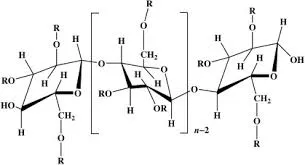
des. . 03, 2024 10:15 Back to list
high viscosity hpmc
Understanding High Viscosity Hydroxypropyl Methylcellulose (HPMC)
In the realm of pharmaceuticals, food, and numerous industrial applications, hydroxypropyl methylcellulose (HPMC) plays a pivotal role due to its unique properties. Particularly, high viscosity HPMC stands out for its thickening, gelling, and film-forming abilities. This article will delve into the characteristics, applications, and benefits of high viscosity HPMC, shedding light on its significance in various sectors.
What is HPMC?
Hydroxypropyl methylcellulose is a white, odorless powder that is soluble in cold water but not in hot water. It is derived from natural cellulose, undergoing a series of chemical modifications to enhance its solubility and functional properties. The ‘high viscosity’ designation refers to its ability to impart considerable thickness in formulations, making it a valuable ingredient in products requiring enhanced texture and stability.
Properties of High Viscosity HPMC
High viscosity HPMC is characterized by its ability to provide a thick, stable consistency to formulations. This viscosity can vary based on the degree of polymer substitution and the concentration of HPMC used. Typically measured in centipoise (cP), high viscosity grades can range between 100,000 to several hundred thousand cP. This makes it an excellent choice for industries that require precise control over the flow and application of materials.
In addition to viscosity, high HPMC exhibits remarkable gel-forming properties when mixed with water, creating a network that can trap water and other ingredients. This gel formation is vital for enhancing the stability and shelf-life of various products. High viscosity HPMC is also non-ionic, making it compatible with a wide range of other ingredients without unwanted interactions.
Applications of High Viscosity HPMC
1. Pharmaceutical Industry In the pharmaceutical realm, high viscosity HPMC is used as an excipient in tablet formulations. It serves as a binding agent and controls the release of active ingredients, allowing for sustained release tablets. Additionally, its thickening properties make it an ideal choice for suspensions and gels, ensuring uniform consistency and enhanced bioavailability.
high viscosity hpmc

2. Food Industry High viscosity HPMC is widely utilized in the food industry as a food additive. It acts as a thickener, emulsifier, and stabilizer, improving the texture and mouthfeel of products such as sauces, dressings, and dairy alternatives. Its low-calorie nature and vegetarian-friendly status make it a popular ingredient among health-conscious consumers.
3. Cosmetic and Personal Care In cosmetic formulations, high viscosity HPMC is prized for its ability to create smooth, stable emulsions. It is found in creams, lotions, and gels, providing a desirable texture while enhancing the spreadability of the products. Additionally, it contributes to the moisturizing properties of various formulations.
4. Construction and Adhesives High viscosity HPMC is also utilized in the construction industry, particularly in tile adhesives and cement-based products. Its thickening and water retention properties are crucial for improving the workability and adhesion of these materials.
Benefits of High Viscosity HPMC
The advantages of high viscosity HPMC are numerous. Its non-toxic, biodegradable nature aligns with current trends toward sustainability in product formulation. Furthermore, its versatility allows it to be used across various industries without significant alterations to existing formulations.
The ability to control the viscosity and gel formation makes high viscosity HPMC a vital ingredient in achieving desired product characteristics. Manufacturers can tailor formulations to meet specific needs, optimizing the consumer experience while ensuring product efficacy.
Conclusion
High viscosity hydroxypropyl methylcellulose represents a critical component across various sectors, including pharmaceuticals, food, cosmetics, and construction. Its unique properties, including excellent thickening, gelling, and stabilizing capabilities, make it indispensable in creating high-quality products that meet consumer demands. As industries continue to evolve, the role of high viscosity HPMC is expected to expand, highlighting the importance of this versatile ingredient in modern formulations. Whether enhancing the texture of food, improving drug delivery systems, or creating smooth cosmetic products, high viscosity HPMC remains a key player in innovation and development across multiple fields.
-
Versatile Hpmc Uses in Different Industries
NewsJun.19,2025
-
Redispersible Powder's Role in Enhancing Durability of Construction Products
NewsJun.19,2025
-
Hydroxyethyl Cellulose Applications Driving Green Industrial Processes
NewsJun.19,2025
-
Exploring Different Redispersible Polymer Powder
NewsJun.19,2025
-
Choosing the Right Mortar Bonding Agent
NewsJun.19,2025
-
Applications and Significance of China Hpmc in Modern Industries
NewsJun.19,2025







